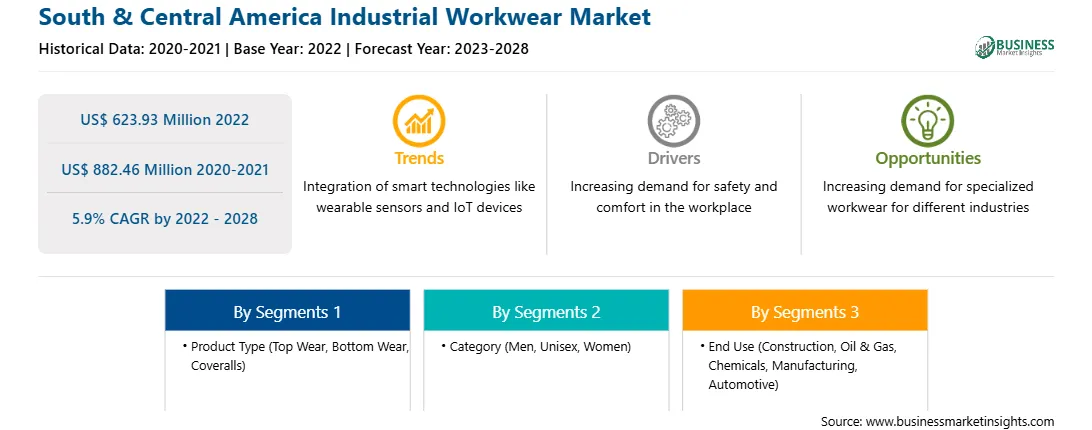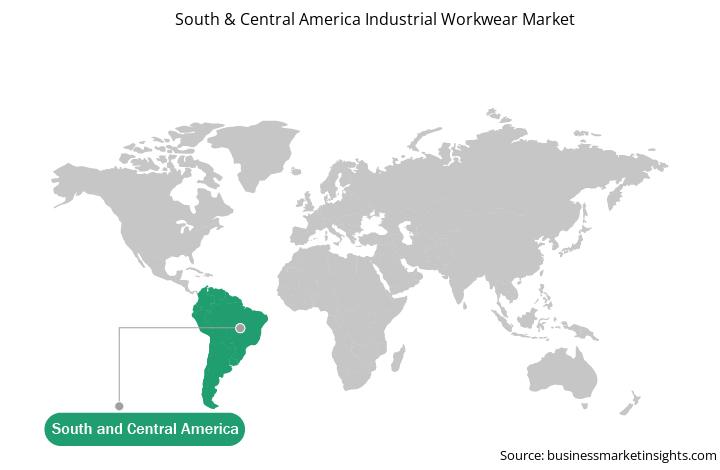The workwear industry is constantly innovating owing to the changes such as increasing use of advanced fabric and industrial workwear with advance technology. The rise in demand for lighter protective apparel and equipment due to the increasing focus on comfort, safety, and durability is anticipated to drive the product innovation in the market. The key producers are continuously seeking ways to increase efficiency, boost quality, and increase their overall productivity. They are also incorporating better properties in their fabric, along with enhanced breathability, to improve the wearer's comfort and prevent hazards in workplaces. Also, the growing need for lighter workwear has driven the innovations in textiles and ultimately led to garment design modifications. For instance, DuPont Kevlar is continuously encouraging innovations in thermal and mechanical protection, which is revolutionizing personal protective equipment (PPE) for hand protection. Additionally, in June 2019, Carhartt, Inc. received a patent for its Full Swing technology. The technology is aimed to incorporate a concealed stretch-back layer that improves mobility by providing a greater range of motion while maintaining the integrity and function of the garment. Moreover, companies are shifting their focus on the manufacturing of fashionable and comfortable products owing to increased demand for customized and durable industrial workwear. Many prominent players in the industrial workwear market are adopting developed technologies to innovate industrial workwear products and ensure workers safety. For instance, in November 2019, CE-Creates announced the launch of Shamal – the next generation of specialized industrial clothing. The clothing will use latest fabric technology to engineer specialized industrial clothing and enhance the health and safety of the outdoor professionals. Thus, increasing product innovation with new technology by various key manufacturers is expected to emerge as a significant trend in the overall industrial workwear market during the forecast period.
With new features and technologies, vendors can attract new customers and expand their footprints in emerging markets. This factor is likely to drive the South & Central America industrial workwear market growth at a notable CAGR during the forecast period.

Strategic insights for the South & Central America Industrial Workwear provides data-driven analysis of the industry landscape, including current trends, key players, and regional nuances. These insights offer actionable recommendations, enabling readers to differentiate themselves from competitors by identifying untapped segments or developing unique value propositions. Leveraging data analytics, these insights help industry players anticipate the market shifts, whether investors, manufacturers, or other stakeholders. A future-oriented perspective is essential, helping stakeholders anticipate market shifts and position themselves for long-term success in this dynamic region. Ultimately, effective strategic insights empower readers to make informed decisions that drive profitability and achieve their business objectives within the market.

| Report Attribute | Details |
|---|---|
| Market size in 2022 | US$ 623.93 Million |
| Market Size by 2028 | US$ 882.46 Million |
| Global CAGR (2022 - 2028) | 5.9% |
| Historical Data | 2020-2021 |
| Forecast period | 2023-2028 |
| Segments Covered |
By Product Type
|
| Regions and Countries Covered | South and Central America
|
| Market leaders and key company profiles |
The geographic scope of the South & Central America Industrial Workwear refers to the specific areas in which a business operates and competes. Understanding local distinctions, such as diverse consumer preferences (e.g., demand for specific plug types or battery backup durations), varying economic conditions, and regulatory environments, is crucial for tailoring strategies to specific markets. Businesses can expand their reach by identifying underserved areas or adapting their offerings to meet local demands. A clear market focus allows for more effective resource allocation, targeted marketing campaigns, and better positioning against local competitors, ultimately driving growth in those targeted areas.

The South & Central America industrial workwear market is segmented into product type, category, end use, and country. Based on product type, the market is segmented into top wear, bottom wear, and coveralls. By category, the South & Central America industrial workwear market is divided into men, unisex, and women. In terms of end use, the market is categorized into construction, oil & gas, chemicals, manufacturing, automotive, and others. From country point of reference, the South & Central America industrial workwear market is segmented into the Brazil, Argentina, and Rest of South and Central America.
ARAMARK, Honeywell International Inc., Lakeland Industries Inc., and Ansell Ltd. are a few major companies operating in the South & Central America industrial workwear market.
The South & Central America Industrial Workwear Market is valued at US$ 623.93 Million in 2022, it is projected to reach US$ 882.46 Million by 2028.
As per our report South & Central America Industrial Workwear Market, the market size is valued at US$ 623.93 Million in 2022, projecting it to reach US$ 882.46 Million by 2028. This translates to a CAGR of approximately 5.9% during the forecast period.
The South & Central America Industrial Workwear Market report typically cover these key segments-
The historic period, base year, and forecast period can vary slightly depending on the specific market research report. However, for the South & Central America Industrial Workwear Market report:
The South & Central America Industrial Workwear Market is populated by several key players, each contributing to its growth and innovation. Some of the major players include:
The South & Central America Industrial Workwear Market report is valuable for diverse stakeholders, including:
Essentially, anyone involved in or considering involvement in the South & Central America Industrial Workwear Market value chain can benefit from the information contained in a comprehensive market report.